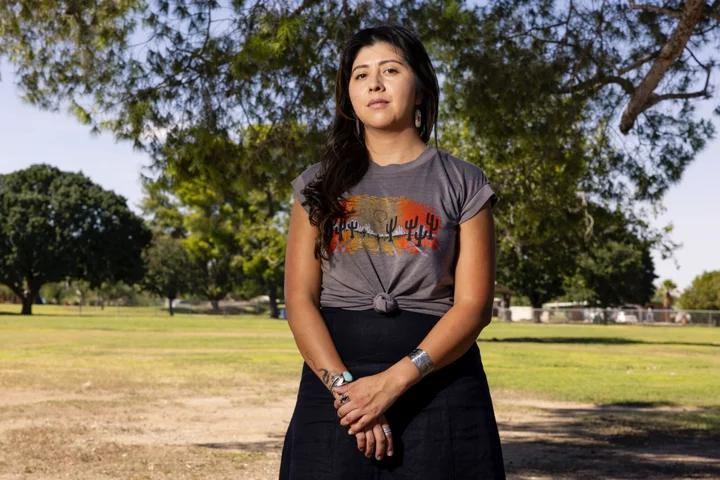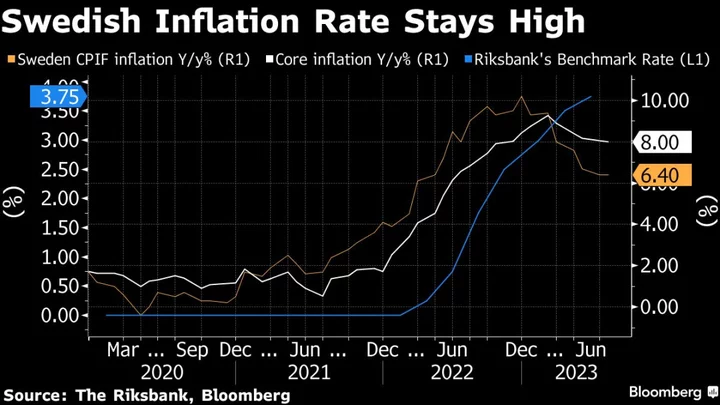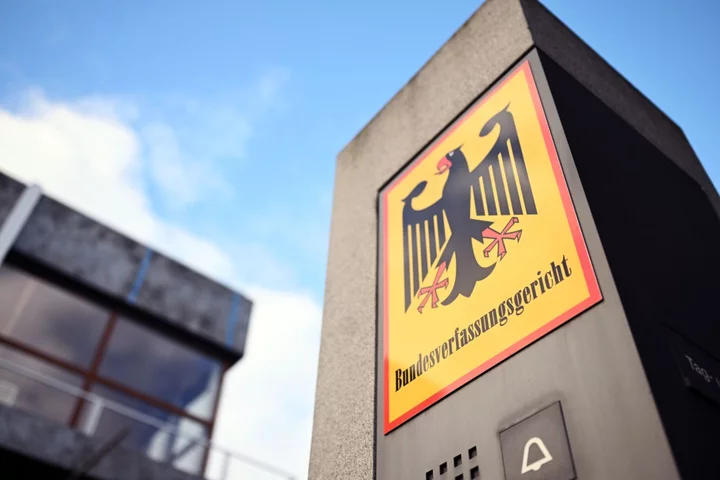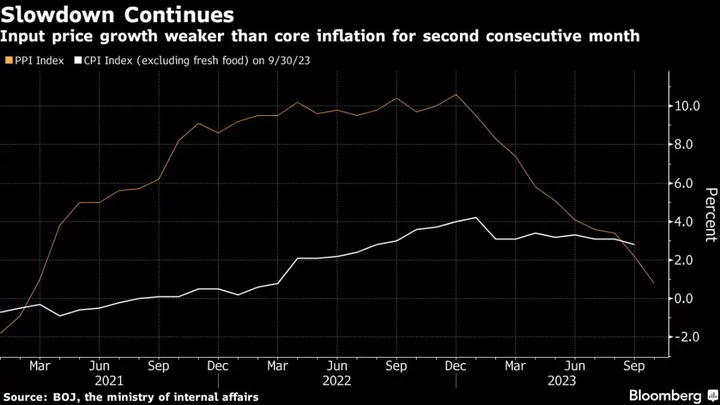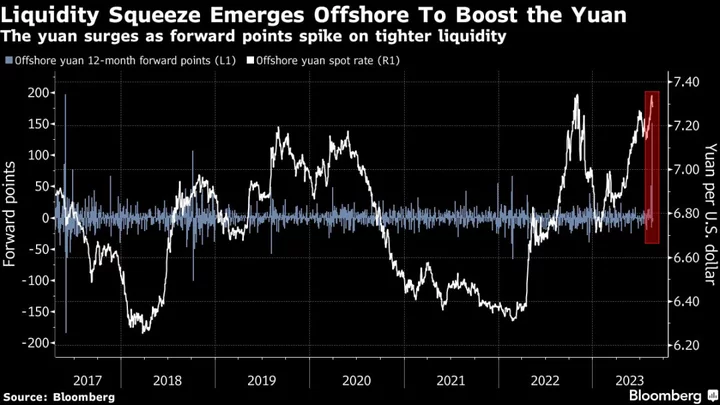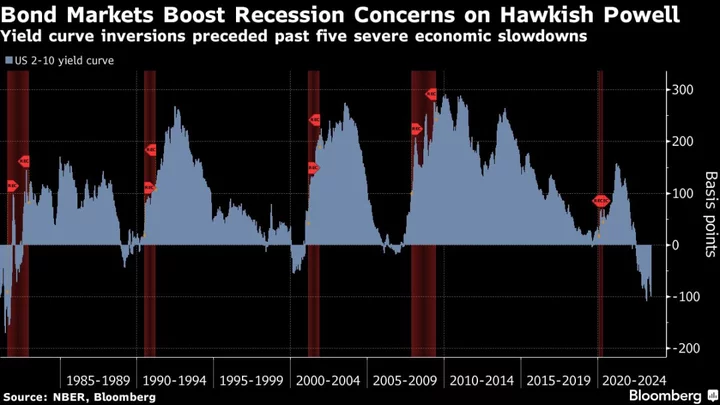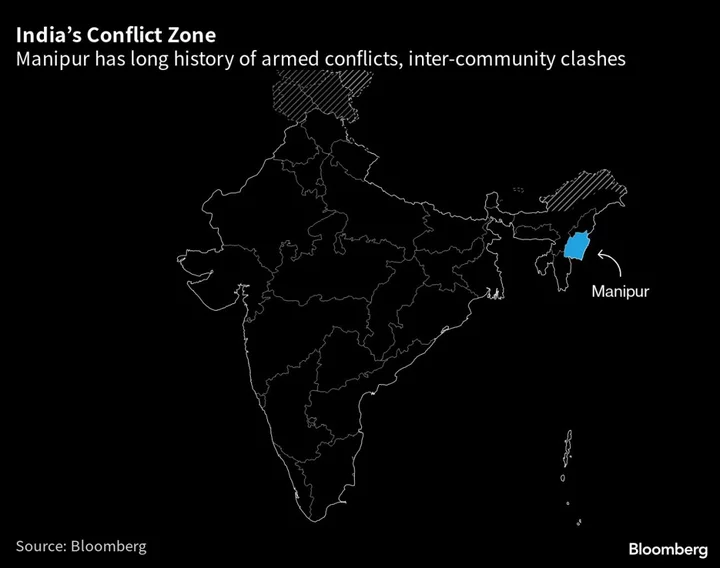Inflation has cooled down from a year ago, but that’s failing to allay the pain of Americans who are still paying up at gas pumps and grocery aisles.
As a result, there’s a growing disconnect between policymakers, who point to cooling inflation indicators as a sign of progress, and people who are struggling to make ends meet. Even as the Federal Reserve’s favored measure of price gains eases, the cost of food, gasoline, car insurance and other essentials is still elevated after two years of persistent increases. The rate of core inflation stands at 4.3%.
It all points to a pressing issue for President Joe Biden as he tries to convince voters of his economic record for his 2024 reelection bid: How the economy looks on paper isn’t matching up with what consumers are experiencing in their everyday lives.
“What they see is the milk still costs as much as it did, the gas is still too expensive, and maybe it’s from the gut that they’re making this call that they’re not happy,” said Quinnipiac University pollster Tim Malloy.
It costs $734 more each month to buy the same goods and services as two years ago for households who earn the median income, according to Mark Zandi, chief economist of Moody’s Analytics.
Fed Chair Jerome Powell said at a press conference after last week’s Federal Open Market Committee meeting that even though households are overall in good shape thanks to a hot labor market and rising wages, surveys show consumers are dissatisfied with the economy and high prices.
“A lot of that is just people hate inflation. Hate it,” Powell said. “That causes people to say the economy is terrible, but at the same time, they’re spending money.”
Economists and the Fed tend to focus on so-called core measures of inflation, which exclude volatile items like energy and food, and which they say provide a better understanding of underlying prices.
But it’s the recent surge in gas prices — a main driver of the latest consumer price index report — that is squeezing Angie Hines, a 45 year-old dental sales rep, from Monroeville near Pittsburgh. With average price for regular gas in her area at $3.92 a gallon on Friday — higher than the US average of $3.86, according to AAA — she said she’s switched to a hybrid and stopped calling on some customers to limit the miles she drives.
As for her lifestyle, she’s shopping more at discount stores and eating out less. She jokes with her kids about how great — and free — water is for them.
But overall, she’s frustrated that her daily expenses are going up, her long-term investments like her 401(k) aren’t, and she’s facing the same tax burden as always.
“The government’s still getting their piece of the pie from me,” Hines said. “But there’s just not as much pie to give to my family.”
‘Making Sacrifices’
Rae Johnson, 38, a single parent from Milwaukee, has been forced to make some changes to offset the higher prices of food and the utilities of electricity and natural gas. Neither of those are included in the core CPI measurement, but both saw cost increases in August.
“I do find myself making sacrifices,” said Johnson, who uses the pronoun they. “Food and utilities are the most difficult thing right now.”
The marketing content writer can no longer afford to pay their bill for electricity and gas all at once, so they pay half at the beginning of the month and half at the end. Energy costs in particular shot up, driven in part by a 10.6% monthly increase in gasoline prices — the largest jump since March 2022. They are planning to wait until the weather gets very cold before turning the heat on in their home.
Johnson is also taking advantage of a monthly deal offered by a local butcher to get an assortment of pork chops, Italian sausages, chicken and ground chuck for $20.23 — set to match the year — with the price of chicken and beef at the grocery story too high. And they’ve found ways to make extra money, including dog-sitting for friends.
Small businesses are getting squeezed, too. Brad Payne, 50, says he is paying at least 25% more for ingredients for his food truck, The Breaded Pig, which he parks outside pubs and breweries in Atlanta’s suburbs. At the same time, he says lines for his fried pork chop sandwiches and chili cheese fries are shorter, which he chalks up to pub crawlers pulling back on spending.
He collected just $450 parking outside a popular Suwanee, Georgia, brewery on a recent Thursday night — less than half his usual $1,200.
“I’ve had to raise some of my prices just to kind of keep up to make it,” said Payne, parked outside a pub in downtown Duluth, Georgia, earlier this month. “And gas prices, when you drive a food truck, you only get eight miles a gallon. So the cost of fuel really hurts.”
Spending Squeeze
While consumers’ inflation expectations have remained stable and the job market largely resilient, Americans are growing more pessimistic about the economy.
Biden’s approval rating has fallen to 42% from a high of 57% at the start of his term, as he gears up for a likely rematch with Donald Trump, thanks to voters who are unhappy with inflation and his handling of the economy.
Jared Bernstein, chairman of the US Council of Economic Advisers, said that consumer buying power has largely increased, with inflation growing at a slower pace than the pay of low- and middle-wage workers. That, he said, is evidence that “Bidenomics” is working for Americans.
“Our work isn’t done, for sure,” Bernstein told reporters at a White House briefing in September. “But wages out-pacing inflation is some of the breathing room that the president talks about.”
Still, household incomes fell in 17 states nationwide last year, including in the swing states of Michigan and Pennsylvania, according US Census Bureau data released in September. Just five states — including Florida, Alabama and Utah — saw median income levels improve.
Read more: Household Incomes Fell in Several Key US Swing States Last Year
After gas, car insurance saw one of the biggest price increases in August. Motor insurance rose 19.1%, the biggest annual increase since December 1976.
Adina Diaz, a 37-year-old small business owner, said she’s seen her car insurance premium increase by almost 70% since returning to her home city of Tucson, Arizona, from California last summer. That, coupled with rising gas prices, has made her limit her driving excursions: She said she doesn’t go out unless she has solid plans or if it’s for work.
Over the past few months in particular, Diaz has spent more on electricity, gas and food. Gas in Tucson cost about $2.89 a gallon before the pandemic, and now it’s jumped to $4, she said.
Beyond the day to day, Diaz has been hoping to reopen a spa and wellness center in Tucson after closing her Los Angeles business because of the pandemic. She said she considered a 1,200-square-foot space downtown Tucson, but it was too expensive at $10,000 a month.
“It always was almost a bragging right to say, ‘Hey, Tucson’s affordable living, Tucson’s cheap on gas and food and utilities, Tucson is really just a clean, safe space with no to little homelessness issues,’” Diaz said. “And that has greatly changed since the pandemic happened.”
Housing affordability has been a huge stressor for Nicole Moore, a 37-year-old family therapist. She sold her Tucson home last year because her electricity bills of up to $700 a month were unsustainable.
When she went to buy another house, properties that had once cost $150,000 were listed for as much as $400,000, she said. To make matters worse, she ended up having to provide financial support for her retired father when the rent on his home — where he’s lived for decades — went up by $200 in August.
“It’s just kind of heartbreaking,” Moore said.
--With assistance from Alex Tanzi and Rich Miller.
Author: Mark Niquette, Jarrell Dillard and Michael Sasso

